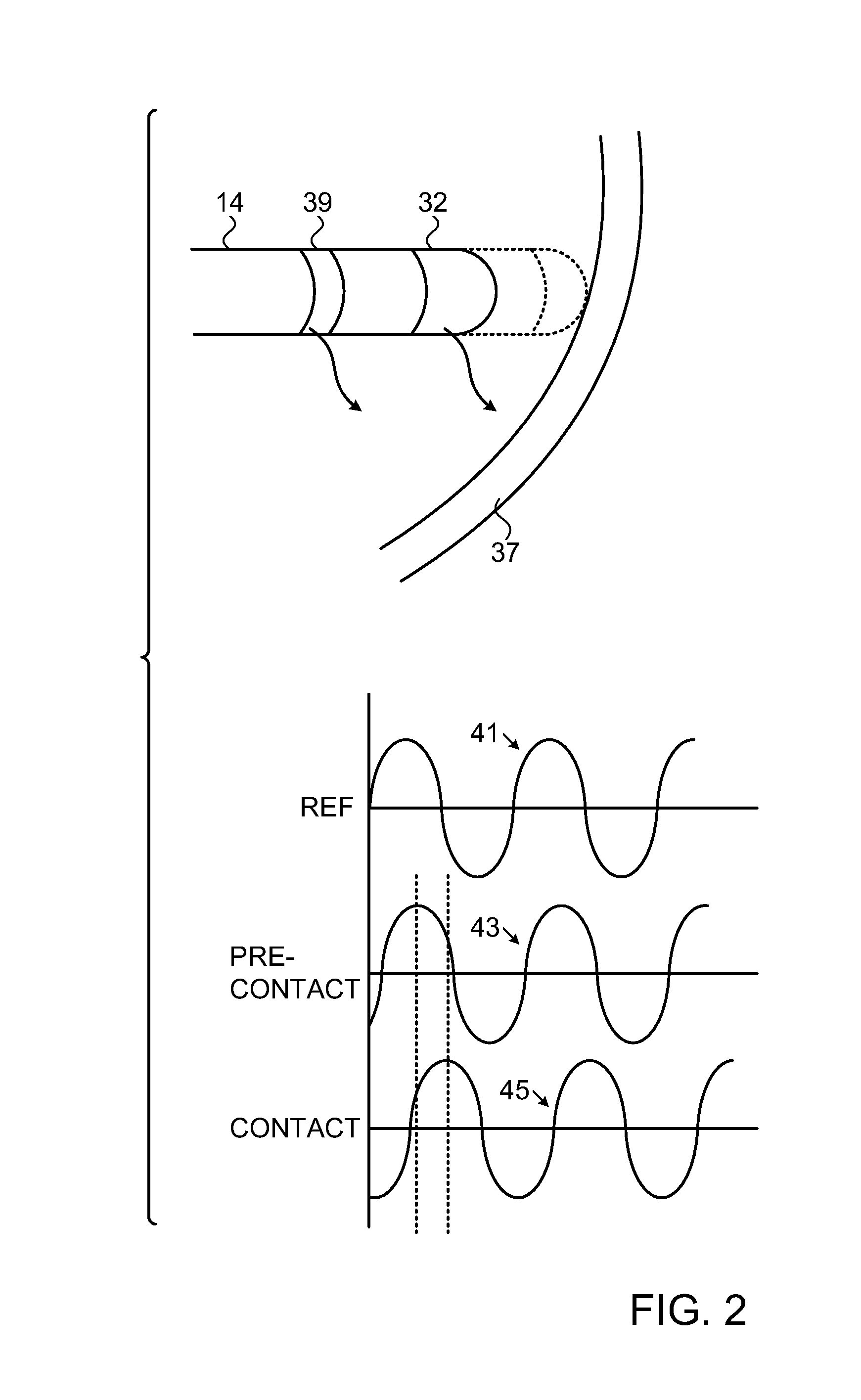Machine learning in determining catheter electrode contact
a machine learning and electrode contact technology, applied in the field of tissue ablation systems, can solve problems such as unreliable binary contact indications, asynchronous rhythms, and disruption of normal cardiac cycles
- Summary
- Abstract
- Description
- Claims
- Application Information
AI Technical Summary
Benefits of technology
Problems solved by technology
Method used
Image
Examples
example 1
[0076]Table 1 illustrates a numerical example that illustrates the underlying principal of the process of FIG. 3.
TABLE 1Phase Reading120120100140120110130120120IndicationNo ContactNo ContactNo ContactContactContactNo ContactContactContactContact
example 2
[0077]Reference is now made to FIG. 6, which is a graph 89 illustrating correlation of contact determinations using the method described with reference to FIG. 3 with measurements using a conventional contact force catheter with the CARTO 3 System as a reference method. The ThermoCool® SmartTouch™ Contact Force Sensing Catheter, available from Biosense Webster, Inc., is suitable. In FIG. 6, contact force threshold is plotted against accuracy. A contact force threshold of 6 is associated with the highest accuracy of the inventive method.
[0078]It will be appreciated by persons skilled in the art that the present invention is not limited to what has been particularly shown and described hereinabove. Rather, the scope of the present invention includes both combinations and sub-combinations of the various features described hereinabove, as well as variations and modifications thereof that are not in the prior art, which would occur to persons skilled in the art upon reading the foregoing...
PUM
 Login to View More
Login to View More Abstract
Description
Claims
Application Information
 Login to View More
Login to View More - R&D
- Intellectual Property
- Life Sciences
- Materials
- Tech Scout
- Unparalleled Data Quality
- Higher Quality Content
- 60% Fewer Hallucinations
Browse by: Latest US Patents, China's latest patents, Technical Efficacy Thesaurus, Application Domain, Technology Topic, Popular Technical Reports.
© 2025 PatSnap. All rights reserved.Legal|Privacy policy|Modern Slavery Act Transparency Statement|Sitemap|About US| Contact US: help@patsnap.com



